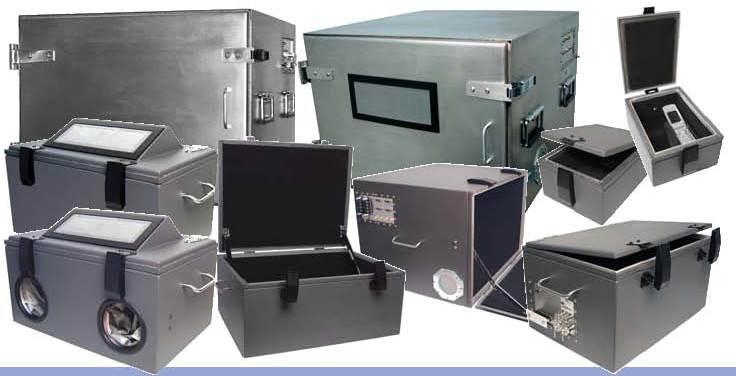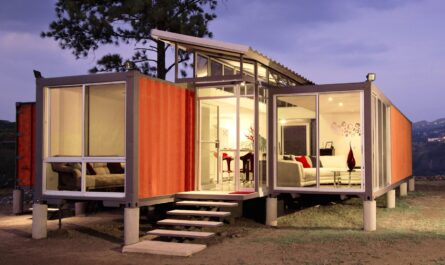With the ever-increasing usage of wireless technologies like 5G, Bluetooth, WiFi etc., electromagnetic interference (EMI) has become a serious issue. Circuit boards and electronic devices emit electromagnetic radiation during operation which can interfere with other nearby electronics. This is where RF shielded test enclosures play a vital role in maintaining the integrity of electronic testing and development processes.
What is an RF Shielded Test Enclosure?
An RF shielded test enclosure, also known as an EMI test chamber, is a specially designed isolated space that blocks electromagnetic waves from entering or exiting. It provides a controlled electromagnetic environment for testing the electromagnetic compatibility (EMC) and other RF specifications of electronic devices and equipment.
RF Shielded Test Enclosures are typically made of highly conductive materials like copper, aluminum or steel panels. The walls, doors, windows and seams are constructed in a way to provide high shielding effectiveness against electromagnetic waves in the frequency range of 10KHz to 40GHz. Proper grounding of the enclosure is also essential to maintain its shielding capabilities.
Importance of RF Shielding in Electronics Testing
RF shielding plays a vital role in electronics product development and testing processes:
– Ensures Accuracy of Tests: The controlled RF environment inside a shielded enclosure allows accurate evaluation of a device’s emissions and immunity to electromagnetic interference. Outside interference is blocked from affecting test results.
– Compliance with EMC Regulations: Most countries have stringent EMC regulations that electronic devices must comply with before sale. An RF shielded test chamber is needed to properly measure and certify compliance with EMI standards.
– Development of Wireless Devices: Radios, Bluetooth modules, WiFi chips etc. need proper RF shielding during development to prevent interference while optimizing wireless performance.
– Safety from Hazardous Emissions: Some electronic assemblies can generate hazardous levels of EMI during testing. An RF shielded room protects personnel from these emissions.
– Isolation for Sensitive Tests: Applications like antenna pattern measurements require an isolated electromagnetic space free from external noise to get accurate radiation patterns.
Key Features of a Good RF Shielded Enclosure
When selecting an RF shielded test enclosure, some important features to look for include:
– High Shielding Effectiveness: The enclosure structure and material should provide 80dB or more shielding from 10KHz to 40GHz.
– Seamless Construction: Alljoins between panels and doors should be electrically bonded with waveguide below cutoff construction to maintain shielding.
– RF Door: The shielded door allows equipment to be moved in/out without compromising the chamber’s shielding. RF gaskets are used to maintain seal.
– Grounding System: Proper grounding of all metal surfaces through low impedance connections is critical for shielding effectiveness.
– RFI Fixtures: RF filter panels and other fixtures control any openings and provide EMI damping to maintain chamber shielding integrity.
– Environmental Monitoring: Sensors inside monitor temperature, humidity and other parameters for testing under controlled conditions.
– Accessories: Features like RF probes, instrumentation cables, fiber optic ports extend the test capabilities of the enclosure.
Types of RF Shielded Enclosures
Enclosures for EMC testing come in different types based on their size and intended applications:
– Tabletop Chambers: Small portable enclosures, commonly 3-5 feet, ideal for desktop product testing and troubleshooting.
– Compact Walk-in Chambers: Slightly larger walk-in rooms, around 6-10 feet, ideal for EUT testing on benches or shelving.
– Standard Walk-in Chambers: Even bigger 10-20+ feet rooms, for testing large equipment or performing multiple simultaneous tests.
– Anechoic Chambers: Fully lined with RF absorbent material to eliminate reflections, used where emissions need to be measured free from chamber effects.
– TEM Cells: Cylindrical structure used for EMI troubleshooting at the circuit board or module level under controlled RF field conditions.
Ensuring Proper Installation and Use
For the RF shielded enclosure to deliver rated performance, proper installation, grounding and use are critical. Professional installation by qualified technicians makes sure all architectural and electrical shields are property installed as per manufacturer guidelines. Periodic audits keep the chamber operating optimally for EMC testing needs over its lifespan. With regular maintenance and calibration, RF shielded test enclosures provide a robust isolation environment for development and compliance testing of wireless devices.
*Note:
1. Source: Coherent Market Insights, Public sources, Desk research
2. We have leveraged AI tools to mine information and compile it



